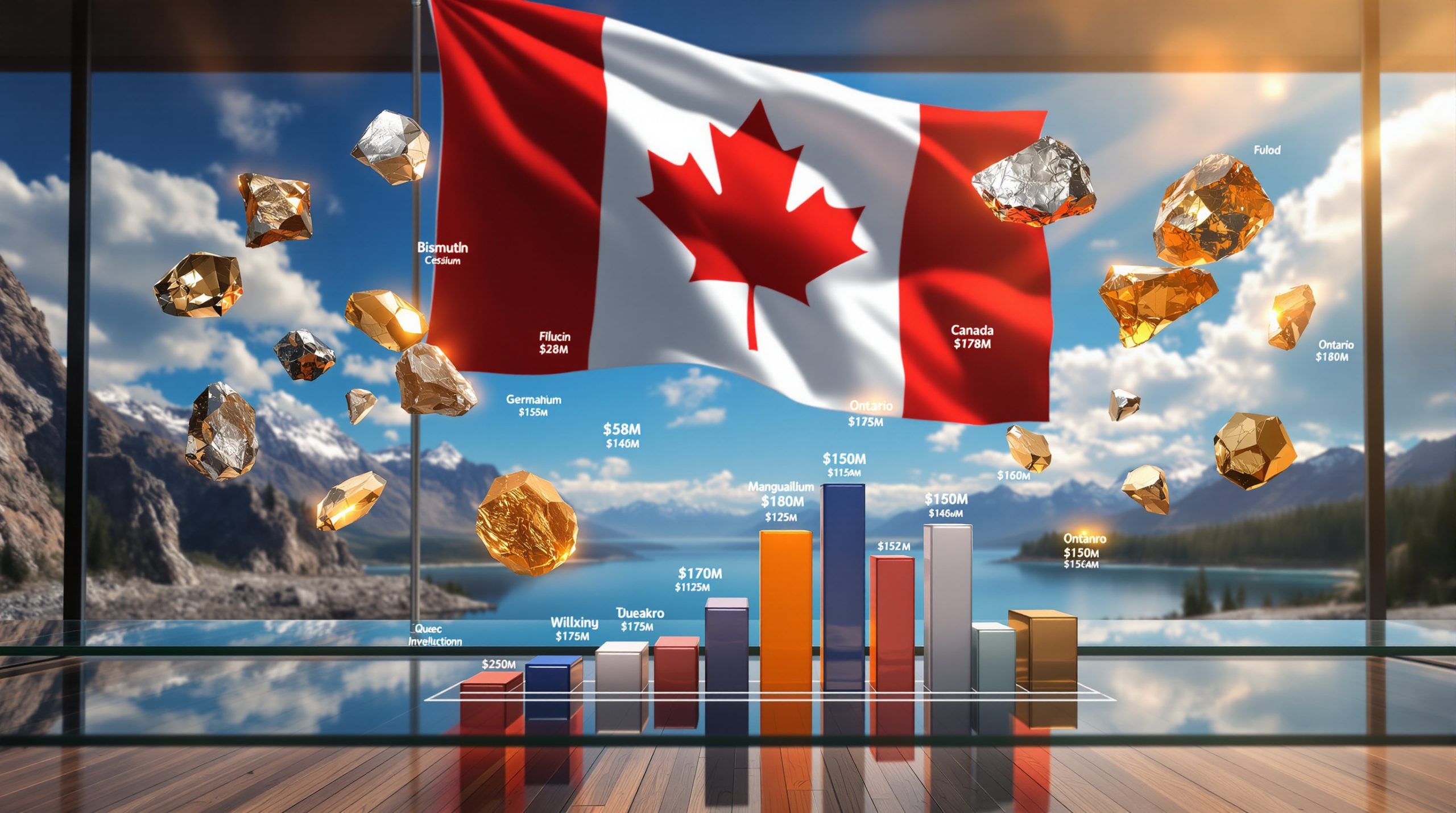Understanding the US-China Rare Earth Trade Dynamics
The Strategic Importance of Rare Earth Elements
Rare earth elements (REEs) are crucial components for modern technology and defense systems, despite their somewhat misleading name. These 17 elements on the periodic table aren't actually rare in the Earth's crust, but economically viable concentrations are scarce. Their unique magnetic, luminescent, and electrochemical properties make them irreplaceable in high-tech applications ranging from smartphones to missile guidance systems.
MP Materials, operating the Mountain Pass mine in California, stands as America's primary bulwark against complete Chinese dominance in the rare earth supply chain. The company's integrated mining and processing operation represents a critical node in U.S. efforts to secure domestic supplies of these strategic minerals essential for both economic competitiveness and national security.
These elements form the backbone of the clean energy transition, with neodymium, praseodymium, and dysprosium being particularly vital for the production of powerful permanent magnets used in electric vehicle motors and wind turbine generators. Defense applications are equally dependent, with a single F-35 fighter jet requiring approximately 920 pounds of rare earth materials for everything from precision-guided munitions to radar systems.
MP Materials' Decision to Halt Chinese Exports
In a significant development that underscores the geopolitical tensions surrounding critical mineral shortages, MP Materials Corp. announced on April 17, 2025, that it would completely cease shipments to China. This decision represents a major shift in rare earth trade dynamics and signals growing American determination to reclaim control over strategic supply chains.
The company's decision came as a direct response to Beijing's implementation of export controls on similar critical materials in 2024, which threatened to weaponize China's dominant position in the rare earth processing sector. By halting exports to China, MP Materials aims to accelerate the development of domestic processing capabilities rather than continuing to rely on Chinese refineries.
MP Materials explicitly framed this export cessation as part of a broader strategy to "reindustrialize" the minerals supply chain within the United States. This language reflects the growing recognition that industrial policy and national security concerns are increasingly inseparable in the critical minerals sector, which has become a focal point of U.S.-China strategic competition.
How Did the US-China Rare Earth Relationship Evolve?
Historical Context of Rare Earth Trade
The Mountain Pass mine in California once supplied approximately 50% of global rare earth elements until the 1990s, representing America's former dominance in this strategic sector. However, a combination of factors including environmental concerns, lower production costs overseas, and China's strategic investments in rare earth processing led to a dramatic shift in the global landscape.
China's rise to dominance wasn't accidental but resulted from decades of careful industrial planning and investment. By the early 2000s, China controlled over 95% of global rare earth reserves processing capacity, creating a chokepoint that became increasingly concerning to U.S. policymakers as tensions between the countries grew. This stranglehold on processing—the complex middle step between mining and manufacturing—proved more strategically valuable than control of mining operations alone.
The United States has been working diligently to rebuild domestic capacity since 2010, when China briefly halted rare earth exports to Japan during a territorial dispute—a wake-up call about the strategic vulnerability created by overreliance on Chinese supplies. The reopening of Mountain Pass under MP Materials in 2017 marked a critical milestone in this effort, though full supply chain independence remains a work in progress.
China's Export Control Measures
Beijing's implementation of export restrictions on certain rare earth materials in 2024 represented a significant escalation in the mineral aspects of U.S.-China competition. These controls specifically targeted materials processed into forms ready for high-tech manufacturing, revealing China's sophisticated understanding of supply chain leverage points.
These export controls triggered reciprocal actions from U.S. producers like MP Materials, whose decision to halt shipments to China demonstrates the new reality of strategic decoupling in critical mineral supply chains. Industry analysts note that China's export controls were likely designed to maintain leverage in clean energy supply chains while signaling displeasure with various U.S. technology restrictions.
The restrictions highlight the strategic importance China places on rare earth elements as both economic assets and geopolitical investor strategies. Chinese policy documents have referred to rare earths as "strategic resources" since the 1980s, demonstrating a long-term vision that contrasted with the market-driven approach prevalent in Western economies until recently.
What Are Rare Earth Elements and Why Do They Matter?
Critical Applications of Rare Earth Elements
Rare earth elements are essential components in modern defense equipment, where they enable technologies that provide the U.S. military with crucial advantages. They're found in guidance systems that allow precision strikes, radar systems that provide battlefield awareness, and communication equipment that ensures command and control capabilities. The Department of Energy has aptly described rare earths as "the vitamins of modern industry" due to their outsized importance relative to the small quantities used.
In the civilian technology sector, rare earths enable the miniaturization and efficiency improvements that drive innovation. Smartphones contain multiple rare earth elements—from neodymium in tiny speakers to europium and terbium in displays. Electric vehicles typically require 1-2 kilograms of rare earth magnets, which provide superior performance compared to conventional alternatives. Wind turbines using rare earth permanent magnets can generate electricity more efficiently than models without them, particularly in low-wind conditions.
Perhaps most significantly, rare earth elements are critical enablers of the green energy transition. The International Energy Agency projects a 300% increase in demand for rare earths related to electric vehicles and wind turbines by 2040. This places these materials at the nexus of climate policy and national security concerns, explaining why governments worldwide are racing to secure supplies.
The Mountain Pass Mine Operations
Located in California's Mojave Desert, approximately 15 miles from the Nevada border, the Mountain Pass mine represents America's best hope for rare earth independence. Operated by MP Materials, it's one of the few significant rare earth mining operations outside of China, with ore grades that rank among the highest quality globally.
The mine's operations involve extracting bastnasite, a rare earth fluorocarbonate mineral, from an open pit using conventional mining techniques. Massive dump trucks move raw ore inside the pit for initial processing, where it begins a complex journey toward becoming usable rare earth oxides. The site's geological formation is relatively unique, with rare earth concentrations approximately 8% by weight—significantly higher than most global deposits.
MP Materials has invested heavily in on-site processing capabilities to produce rare earth oxide concentrates, reducing the historical need to ship raw materials to China for processing. This vertical integration strategy aims to overcome the most significant bottleneck in the global rare earth supply chain: the technically complex separation of the chemically similar rare earth elements from each other. This separation process has historically been China's primary competitive advantage, involving hundreds of solvent extraction cycles to achieve high purity levels.
What Are the Implications for Global Supply Chains?
Supply Chain Resilience Efforts
MP Materials' decision to halt exports to China represents a cornerstone of broader American efforts to rebuild domestic rare earth production and processing capabilities. This push for supply chain resilience extends beyond mining to encompass the full value chain, including separation, metal making, alloy production, and magnet manufacturing—all stages where China currently maintains significant advantages.
The move aims to strengthen U.S. supply chain security for critical minerals by creating market incentives for domestic processing investments. Industry analysts estimate that MP Materials' decision could reduce U.S. defense supply chain vulnerabilities by approximately 30% by 2030, though achieving complete self-sufficiency would require additional mines and processing facilities. Currently, about 75% of global manufacturers rely on Chinese rare earth intermediates at some point in their supply chains.
The Inflation Reduction Act and CHIPS and Science Act include provisions specifically designed to accelerate this supply chain reshoring, with tax incentives and direct investments in domestic processing capacity. These policy tools reflect a growing recognition that market forces alone may be insufficient to overcome China's established advantages in the sector, necessitating a more interventionist approach to industrial policy.
Economic and National Security Considerations
Rare earth elements represent strategic resources with profound national security implications, explaining why they've become central to geopolitical competition between the U.S. and China. Defense contractors require stable, secure supplies of these materials for systems ranging from night vision goggles to satellite communications. The Pentagon has identified rare earths as among the most critical materials for maintaining military technological superiority.
The halt in exports highlights growing economic tensions between the U.S. and China, with rare earths serving as both leverage points and barometers of the broader relationship. "This is economic statecraft," noted a Brookings Institution analyst, referring to MP Materials' decision as an example of how private sector actions increasingly align with national strategic objectives in critical sectors.
This development demonstrates how critical minerals have become central to geopolitical competition, with supply chains increasingly bifurcated along geopolitical lines. Following MP Materials' announcement, rare earth prices spiked approximately 20% on global markets, reflecting immediate supply concerns. Meanwhile, MP Materials' stock rose 12%, indicating investor confidence in the company's strategic positioning amid these shifting trade dynamics.
FAQ About US Rare Earth Exports to China
What prompted MP Materials to halt exports to China?
MP Materials' decision came in direct response to China's implementation of export controls on similar critical materials in 2024. These Chinese restrictions targeted downstream rare earth products, effectively leveraging China's dominance in processing to maintain advantage in high-value manufacturing chains. By halting exports, MP Materials aims to accelerate the development of alternative processing capacity outside China.
The company's strategic decision aligns with broader U.S. policy objectives to support domestic supply chain development and reduce vulnerabilities to potential future restrictions. The Department of Defense has awarded MP Materials contracts to establish domestic processing capacity, enabling the company to capture more value domestically rather than exporting raw materials for processing.
This export halt represents part of a broader effort to reduce dependency on international processing, recognizing that mining alone is insufficient for supply chain security. The complex processing steps—separation, metal making, alloying, and magnet manufacturing—represent the true chokepoints in global rare earth supply chains.
How might this affect rare earth prices and availability?
Market analysts project potential short-term supply disruptions in the global rare earth market as supply chains adjust to this significant shift. Historically, sudden changes in rare earth availability have led to price volatility, with price spikes of 200-300% not uncommon during previous market disruptions. The specific rare earth elements most affected will likely be those where MP Materials is a significant supplier of raw materials to Chinese processors.
Price increases for rare earth elements and derived products seem inevitable in the near term, though the magnitude will vary by element and application. Manufacturers in sectors like electronics, automotive, and renewable energy may face increased costs and potential delays as supply chains reorganize. Japanese and European manufacturers, who have worked to diversify their supply chains since China's 2010 export restrictions, may be better positioned to weather these disruptions.
This development will likely accelerate alternative sourcing strategies by manufacturers, including increased recycling efforts, substitution research, and investments in rare earth projects outside both the U.S. and China. Countries like Australia, with its growing Australia's rare earth supply, Canada, and Vietnam may see increased interest in their rare earth deposits as manufacturers seek to establish more diversified supply networks.
What does this mean for US-China trade relations?
The export halt represents an escalation in strategic resource competition between the world's two largest economies. "This tit-for-tat risks bifurcating global tech supply chains," warned a prominent trade economist, highlighting concerns that critical minerals are becoming pawns in a larger geopolitical chess match with potential consequences for global innovation and economic efficiency.
The move indicates growing concerns about supply chain vulnerabilities in both countries, with each taking increasingly protective stances toward materials deemed strategically important. This fits a broader pattern of "friend-shoring" and supply chain nationalism that has accelerated since the COVID-19 pandemic exposed the fragility of global supply networks.
This development may trigger further reciprocal actions in critical mineral sectors, potentially extending to other materials like lithium, cobalt, and gallium. The European Union's Critical Raw Materials Act offers a comparative policy framework that attempts to balance security concerns with continued international trade, potentially providing a middle path between complete decoupling and continued vulnerability in what analysts are calling a new commodity super cycle.
Want to Spot the Next Major ASX Mineral Discovery Before the Market?
Discovery Alert's proprietary Discovery IQ model delivers real-time notifications on significant ASX mineral discoveries, instantly analysing announcements to identify high-potential opportunities before they gain widespread attention. Visit the Discovery Alert discoveries page to see how historic discoveries can generate substantial returns and begin your 30-day free trial today.




